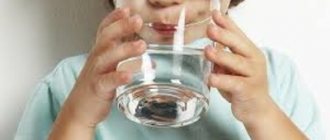Swimming is one of the earliest sports that has virtually no contraindications. The section accepts children from 3 years old. Swimming for children can be both sporting and recreational.
Its benefits are due to the combination of physical activity and the healing properties of water. Little-known facts about the benefits of swimming for children.
What are the benefits of swimming for children?
Much has been said about the benefits of swimming for children, but in addition to well-known truths, such as harmonious physical development and strengthening the nervous system, this sport also has a number of positive qualities that parents need to know about, namely:
- Improvement of cognitive functions. Early exercise in water stimulates the areas of the brain responsible for cognitive functions. According to research results, children who participated in the pool from three to five years old are significantly ahead of their peers in reading, literacy and mathematics;
- Reducing the risk of accidents on the water. By exercising in the pool, your child will not encounter a water accident in the future. Here he will be taught how to behave correctly in extreme situations in order to get to the shore and not drown, because, as we know, the most common cause of drowning is panic;
- Developing independence and determination. Swimming, like any sport, makes children courageous, purposeful and independent. These qualities will allow them to achieve great success in the future, and this applies not only to sports, but also to their career and personal life. According to statistics, swimmers most often become successful businessmen and scientists.
In general, swimming can be called the most useful sport, especially for preschool children. Regular classes will help strengthen all body systems, which will have a positive effect on the child’s further education in primary school.
Playground. I want to become a mermaid. Tips for those who dream of synchronized swimming
In professional schools (there are three of them in Moscow - SDYUSHOR "Trud" in synchronized swimming, MGFSO SDYUSHOR in aquatics, SDYUSHOR "Scythians") there is a strict selection. Kids start learning from scratch; they don’t even need to know how to swim.
The main criterion is physical data. The girl should be tall, slender, thin-boned, have long legs and narrow ankles.
You also need a good ear for music. Water, however, muffles the sound, but this problem is usually solved this way: special hydraulic amplifiers are installed in the pool, which allow you to hear music even in water.
If your girl has all the data, then proceed.
The first stage of training lasts two to three years. It is during this time that the majority drop out - they cannot withstand the difficulties. It's not just children who get tired. It happens that parents become unbearable with daily visits to the pool and tiring waits in the waiting room.
WHAT ABOUT THE BOYS?
This sport is considered purely female, but there have been cases when boys took part in synchronized swimming.
- Yes, this happened. But we always refuse them,” Nadezhda Ragozina continues the conversation. – It’s simply not clear by what criteria to evaluate young “synchronized swimmers”, because the physiology of girls and boys differs too much. But in America there are still such students.
IT IS SAFE?
In synchronized swimming there is little risk of injury. The most common injury is sprain. Also, with heavy physical exertion, which is inevitable during training, the meniscus (crescent-shaped cartilage located in the knee joint) gradually wears out and can rupture. In this case, only surgery will help. The intervention of surgeons is successful in most cases - as a rule, the patient begins to walk almost immediately.
If you do not use a nose clip, you can get sinusitis or inflammation of the nasal mucosa. If you exercise for a long time and stay in water too much, this can lead to inflammation of the appendages. So don't overdo it.
AND HOW MUCH DOES IT COST?
Synchronized swimming is an expensive pleasure. But at first you need very little: a swimsuit, glasses, a nose clip, a cap. The most ordinary sports swimsuit is suitable for training. It will cost a thousand rubles. To compete at competitions, you can embroider it by hand or immediately choose a beautiful, bright option.
The price for a nose clip is from 200 rubles and above, depending on the shape and size. If two girls have different nose shapes, then they will not be able to use one.
For a cap and glasses you will pay 400 rubles each.
Most likely, parents will have to pay for pool rental. This is at least 500 rubles per month.
The older synchronized swimmers get, the more expensive the classes become. Now the competitions are much more serious, and each type of program requires a separate swimsuit. If you sew it to order, it will cost no less than $100.
IF YOU ARE NOT SELECTED
Often during the training process it becomes clear that one of the girls, despite similar external data, is not born for synchronized swimming. But if you still really want to exercise, and the coach showed you the door, then there is an alternative. You can transfer to a non-vocational school. Almost everyone is accepted there. Classes in such sections are practically no different from professional ones. The girls learn the same movements, and competitions take place among them. It’s just that in this case your child will not have a bright sports future, but he will receive a lot of other pleasures from playing his favorite sport.
WHERE TO CONTACT
Sports school "Trud" in synchronized swimming. Art. m. "Prospekt Mira", SC "Olympiysky", jumping sector. Tel. 958-16-60.
Sports school "Scythians". Art. m. "Izmailovsky Park", Sirenevyi Blvd., 2. Tel. 166-00-49.
MGFSO SDYUSHOR in water sports. Art. m. "Prospekt Mira", SC "Olympiysky", jumping sector. Tel. 912-72-68.
Sports and recreation center "Skhodnya" Art. m. "Skhodnenskaya". St. Fabricius, 41. Tel. 948-00-50.
Children's and Youth Sports School No. 007. Art. m. "Prospekt Vernadskogo", st. Chobotovskaya, 4. Tel. 733-38-88.
National Association of Army Sports, Youth Sports School. Art. m. "Prospekt Vernadskogo", st. Udaltsova, 40. Tel. 956-32-09.
Types of swimming
Competitive swimming includes several disciplines. At first, children engage in general swimming, but later they need to choose a direction for further development.
The sections teach the following disciplines:
- Crawl. This is the fastest type of movement in water. Front crawl is also called free style. The crawl also happens on the back. This discipline is considered one of the most dynamic and spectacular in competitions. To practice crawling, you need such data as endurance, physical strength and reaction speed;
- Breaststroke. This type is the most silent, which is why it was used during hostilities. Breaststroke swimmers must have strong arms, because the arms are the main tool for moving through the water in this discipline. The main difficulty of breaststroke is considered to be mastering breathing, because you cannot swim with your head raised above the water;
- Butterfly. Most often, butterfly is perceived as a type of breaststroke, but this is a mistaken opinion. This discipline is characterized by high speeds and serious physical exertion. This type takes on guys with good physical characteristics and impressive muscle mass;
- Synchronized swimming. This discipline is significantly different from others, because it is a dance in water, which requires serious endurance and endurance from athletes. This discipline is considered a women's sport. Girls should have a sense of rhythm and flexibility. Girls from the gymnastics section often come here.
There are other types of swimming, but they are not included in the competition program and are considered amateur. These include frog, Georgian and doggy styles.
What kind of sport should girls with health problems engage in?
Sports sections and hobby groups are attended by children who have no health restrictions.
Reasons for refusal to practice different sports:
- Poor eyesight is a reason not to send your child to shooting, tennis, or biathlon.
- Severe myopia - refusal of power and traumatic loads, which are often found in martial arts and horse riding.
- Problems with the musculoskeletal system prohibit gymnastics.
- Cardiovascular diseases exclude all types of sports with cardio loads, which include athletics, skiing and speed skating.
- Skin diseases and swimming are incompatible things.
Recommended sports for girls with various diseases:
- Children's yoga and Pilates are suitable for children with diseases of the nervous system.
- Swimming is suitable for everyone who has no contraindications. This is a general strengthening sport that will be useful at any age.
- Winter sports increase immunity and improve the body's protective functions.
- Cardio training is recommended to strengthen the heart, blood vessels and develop the lungs, but with the permission of a doctor.
At what age should a child start swimming?
For health purposes, it is recommended to send children swimming in infancy. In such sections, mothers visit the pool with their children, and children from 3 years old are recruited for classes. At such a young age, group classes are also recreational in nature and prepare the baby for a future sports career.
Children begin to study professionally at the age of 7. At this time, schoolchildren have already decided on the main direction and begin to prepare for competitions and performances. When registering a young athlete in a professional section, it is necessary to take out insurance for the child. The cost of insurance depends on the insurance period and completeness of coverage.
Pool activities with parents
When the baby learns to float well in the water and dives with pleasure, you can go to classes in the children's pool. According to the experience of experts, if you start training at home from four weeks, the child will be ready to master baby swimming in the center by about four months. You need to exercise no more than three times a week.
Don't forget to put on your baby a rubber cap and special swim diapers. You will also need:
- shower gel and washcloth;
- towels;
- comfortable shoes for you (for example, rubber slippers);
- comb.
The training should last no more than half an hour and consist of three stages: preparatory, main part and final. First you need to warm up properly and ensure that your baby adapts comfortably. Typically this part consists of swinging, wiring and rinsing.
The main part takes up 80% of the workout. At this time, parents, under the guidance of an instructor, perform special general strengthening exercises with their children, which help them learn to swim and dig faster. After just a few lessons, the baby will be able to do some of the tasks on his own, to the great surprise of his parents. The training ends with calming exercises. The load is calculated in such a way that the baby is not tired, but on the contrary, is full of strength and happily returns to the center.
Learning different swimming styles is recommended for children from 3 years of age. At this age, the musculoskeletal system begins to quickly form. So a serious approach is needed only for those who go to the pool for children from the age of three.
Swimming lessons in the pool for children
Swimming lessons in the pool for children can be divided into recreational and sports. Even if you have enrolled your child in the section, for the first year he will engage in recreational swimming. This is necessary to build muscle mass, familiarize yourself with the technique and adapt the body to frequent exposure to water.
When exercising in a swimming pool, the following side effects may occur due to the high chlorine content:
- Skin rashes and peeling;
- Inflammatory diseases of the respiratory tract.
If after exercising in the pool you notice these manifestations in your child, consult a doctor; you may need to change the pool or choose a different sport for him.
Swimming for babies
Strengthening muscles, adequate physical activity, automatic hardening, prevention of acute respiratory viral infections, as well as boisterous laughter and pleasant physical contact are not all the arguments that parents give when signing up their child for classes in the pool. It was difficult to challenge them, because water was considered the main friend of babies.
However, a couple of years ago, this truism was questioned by the sanitary and epidemiological services of Germany and Belgium . They stated that indoor swimming pools are contraindicated for infants , and today we want to tell you what conclusions the scientific minds came to. Underwater rocks.
Since 2010, German doctors have not recommended that parents take children under 2 years old to swimming pools. The reason for the strict taboos was the disappointing results of several studies, which revealed the high sensitivity of children to chlorine derivatives contained both in the water and in the air of indoor swimming pools .
Most impressive is the experiment carried out by a team of Belgian scientists from the University of Louvain, led by Alfred Bernard, and described in the scientific press in 2010. During the study, 430 children of senior preschool age were divided into two groups. The first included children who, in the first two years of life, visited an indoor pool very rarely or had never been there. The second included children who spent more than 20 hours in chlorinated water during the same period.
The bottom line is this: the risk of developing bronchiolitis (an inflammatory disease of the lower respiratory tract) increases 4.4 times in children who attend swimming lessons. Other studies have found an increased risk of developing respiratory allergies, eczema and asthma in young swimmers. Let's add here another reliably known fact: respiratory tract pathologies, chronic bronchitis and asthma are recognized as occupational diseases of swimmers and pool workers.
Methods of teaching children to swim
The method of teaching children to swim depends on the purpose of the lesson. If this is a health section, classes are held 2-3 times a week. Children learn how to float on the water, perform various exercises and learn techniques.
If the goal of the classes is big-time sports, the teaching methodology is aimed not only at lessons in the pool, but also at strengthening the muscle corset and increasing endurance. In this case, training takes place every day. Classes in the pool are followed by workouts in the gym and on the treadmill. Children also take a dry swimming course.
The main pros and cons of visiting a swimming pool for children
Children's health
Author: Karina Avgustova 16:11, 08 August 2013 1508 0 0
Swimming is the only sport available even to infants. In addition, regular visits to the pool are an excellent way to harden yourself. As practice shows, children who go to the pool not only develop well physically, but also get sick 3-4 times less often than their peers.
What are the pros and cons of visiting a swimming pool for children?
Pros of a swimming pool
Swimming in any sport style, the child overcomes the resistance of the water, and every inhalation and exhalation is excellent breathing exercises for him. The pool has a beneficial effect on blood circulation, cardiovascular and excretory systems. In the pool, the child is in a horizontal position and almost weightless, and accordingly the load on the heart is reduced. Exercising in the pool gives good physical exercise to the entire body and increases endurance. Special exercises in classes develop muscles. Swimming relieves stress on the spine and the entire musculoskeletal system. Swimming improves immunity. If your baby is familiar with the element of water from birth, you won’t have to take a huge first aid kit with cold medicines on your first trip to the sea together. According to experts, being in water allows a newly born baby to relax and relieves postpartum stress.
Cons of a pool
As a rule, all children's swimming training takes place in an indoor pool, where the air is very humid and chlorine evaporation is often present, albeit in small quantities, which is harmful to the lungs. Some experts claim that swimming in the pool causes frequent runny noses and otitis media in very young children. Water entering the nasopharynx leads to inflammation of the mucous membrane, and if it enters the digestive system, it leads to indigestion. There is a version that the baby's diving is fraught with a tendency to dizziness and negatively affects the child's sense of space and balance. In addition, newborn children stay almost vertical in the water and then it is difficult to retrain them. Even conscientiously purified water can harm the baby. This is especially true for children with dry and allergy-prone skin. Any element of disinfection, be it ozone or chlorine, loosens the baby’s epidermis, which makes it easier for bacteria to “access the body,” which is abundant in most pools. At what age?
At what age to send a child to swimming depends mainly on his desire and the capabilities of his parents. You can sign up for the pool at two, four, or seven years of age. However, swimming lessons will not frighten even a baby who is only a few months old. After all, before they are born, children literally bathe in amniotic fluid. Therefore, newborns can make their first swims as soon as the umbilical wound heals - in 2-3 weeks.
How to prepare?
The temperature of the amniotic fluid during pregnancy is 37º, and the temperature of the children's pool is 29º. Therefore, you need to start water procedures with a warm home bath at 36-37º. By the 3-5th lesson the water may already be 34-35º. It is important to take your time and make sure that the baby is comfortable. If it seems to you that the baby is cool, add warm water. Along with decreasing the temperature, increase the time spent in the bath: start with 5-10 minutes, and by the time you go to the pool, increase it to 30. As soon as the baby’s umbilical wound heals, it is advisable to invite home an infant swimming instructor who will show you which exercises are best to perform.
Rules for swimming in the pool - Swimming will only benefit you if you don't take it too seriously. Experts insist that up to 5 years old, a swimming pool should be fun for a child. — You need to go to exercise no more than once or twice a week. You can show some movements, “drive” the child along the surface of the water so that he feels it and gets used to it, the main thing is to do what the baby likes! — It’s better if you sign up your little one for group classes: even if the little one is terrified by the mere thought of touching the water with his heel, in the company of his peers he will cope with his phobias faster. — Carefully watch the child frolicking in the water. Stop exercise immediately if he has the effect of “marbled” or “goose bumps” and if it becomes bluish in color - these are the first signs of hypothermia. - Pull your baby out of the water if he is overexcited, restless, or simply tired. If at this age a child develops a negative attitude towards water, then it will be difficult to persuade him to swim.
What do you need for a swimming pool?
From the baby:
certificate from a pediatrician; stool analysis for worm eggs; analysis for enterobiasis;
From Mom:
a certificate from a dermatovenerologist and a gynecologist; swimming trunks or reusable swim diapers; knitted sports cap; rubber sandals; towel and robe; sippy cup with water; soap, shampoo, washcloth.
Swimming accessories for children
If you decide to send your child swimming at an early age, you need to purchase swimming accessories for children that will keep your baby as safe as possible. Without these accessories, your child will not be allowed to attend classes.
You will need to buy:
- Hats. You will need to buy a silicone swimming cap and a cotton cap, which you put on after a shower until your hair is completely dry;
- Glasses. The color of glasses should be chosen according to the lighting. In open water and in pools with strong lighting, dark lenses are suitable, blue and gray are for reducing brightness, orange and brown are for dim pools;
- Earplugs. Pool earplugs are reusable and disposable. Until your little one learns to care for her accessories, it is better to buy disposable pads;
- Oversleeves. Armbands for children are selected according to size. It is important to choose an accessory so that it does not come off your forearm and does not pinch your hand;
- Swimming belt. The smallest swimmers need a belt. This accessory is used only at the stage of teaching a child to float on the water. The belt is selected according to the baby’s weight;
- Swimsuit or swimming trunks (2 pcs.). Girls need to buy one-piece swimsuits, and boys should buy swimming trunks in the form of shorts.
A complete set of accessories costs an average of 3,000 rubles. Also make sure to buy two towels, a washcloth and soap, pool shoes and a comfortable bag. Before enrolling in the section, you will need to undergo a medical examination to exclude contraindications to classes.
Sports (professional) swimming for children
Most sections working with younger groups accept children from 3 years of age. Swimming of younger children is classified as infant swimming. In this case, by the age of 1.5-3 years the child will already feel at home in the water, as if in his own element, and will learn to dive. Such a child will be ready to learn professional swimming at 3 years old.
How to teach your child to do a cartwheel at home in 5 minutes
At the age of 3, classes (in addition to the benefits from the sports activities themselves) teach you to think, listen and hear the coach. The baby splashes out energy, develops coordination and relaxes.
Child athlete
The beginning of training consists of familiarization with the basics of sports activities. The child learns not to be afraid of water, studies it more closely, and learns its properties. Next, the baby will study the effect of water on moving in space, learn to relax and lie on the water surface. Classes are held in the presence of adults.
Attention. When sending your baby to the section, you should make sure that the trainer has sufficient experience and qualifications. To work with young children you need to have great endurance, patience and teaching skills.
Closer to the beginning of school age, the child receives a more expanded understanding of science. At this age, he is ready to learn professional swimming. The guys practice in various styles and do the exercises necessary for this.
By the age of 7-8, promising girls and boys will be able to learn sports professionally. To do this, you can choose both standard directions and diving. Many people even like synchronized swimming.
A child who dreams of playing sports professionally must take a preliminary health course. After this stage, the baby will already have certain skills, the child will understand in practice what swimming is, and will clearly understand whether he likes it or not.
Classes include not only training in the pool, but at the same time the child develops in all respects, practicing different types of loads. For example, training in the gym or on exercise machines.
The child will be allowed to participate in classes after the health course trainer confirms the child’s learning abilities, as well as after passing a medical commission. The latter confirms that the child has no contraindications to playing this sport. You should also be prepared for the fact that training will be carried out every day.
Note. If it is decided that your child will go to the section, you need to purchase the necessary equipment and swimming clothes. In addition to standard slippers, a bathing suit and hygiene items, the child will need special equipment. These include goggles, safety sleeves, belts or boards. The issue of purchasing equipment is discussed with the coach individually.
Be sure to take into account that the activity should bring a pleasant impression. If your child does not want to engage in this sport, then you can consider other options. In this case, the pool can be visited for leisure.
Complexes of morning exercises for the senior group
Medical contraindications
Swimming as a sport has a number of contraindications for which exercise in the pool is strictly prohibited, these include:
- Any skin diseases, including dermatitis, scabies, eczema, psoriasis;
- Diseases and injuries of the spine (except for spinal curvature);
- Congenital and acquired heart disease;
- Chronic and acute viral diseases;
- Epilepsy and other disorders of the nervous system with the manifestation of convulsive syndrome.
Also contraindications include a panicky fear of water. If your child is terribly afraid of water, there is no need to force him to study, this will not solve the problem and will only worsen the psychological problem.
Developing a child: swimming lessons for children
It is known that swimming is one of the most effective and safe ways to strengthen and develop the body.
Medicine encourages children to get used to water and physical activity in it almost from birth. Modern pediatricians and pediatric neurologists recommend starting to bathe children 2 to 3 weeks after birth, since swimming contributes to the balanced physical development of the child, including:
- relieve tone and relax muscles;
- normalization of neurological processes;
- muscle training.
It is important to understand the difference between regular water activity and swimming training. And since the next stage in accustoming a child to water after a home bath is swimming in the pool, you need to know when you can send your child to swim.








